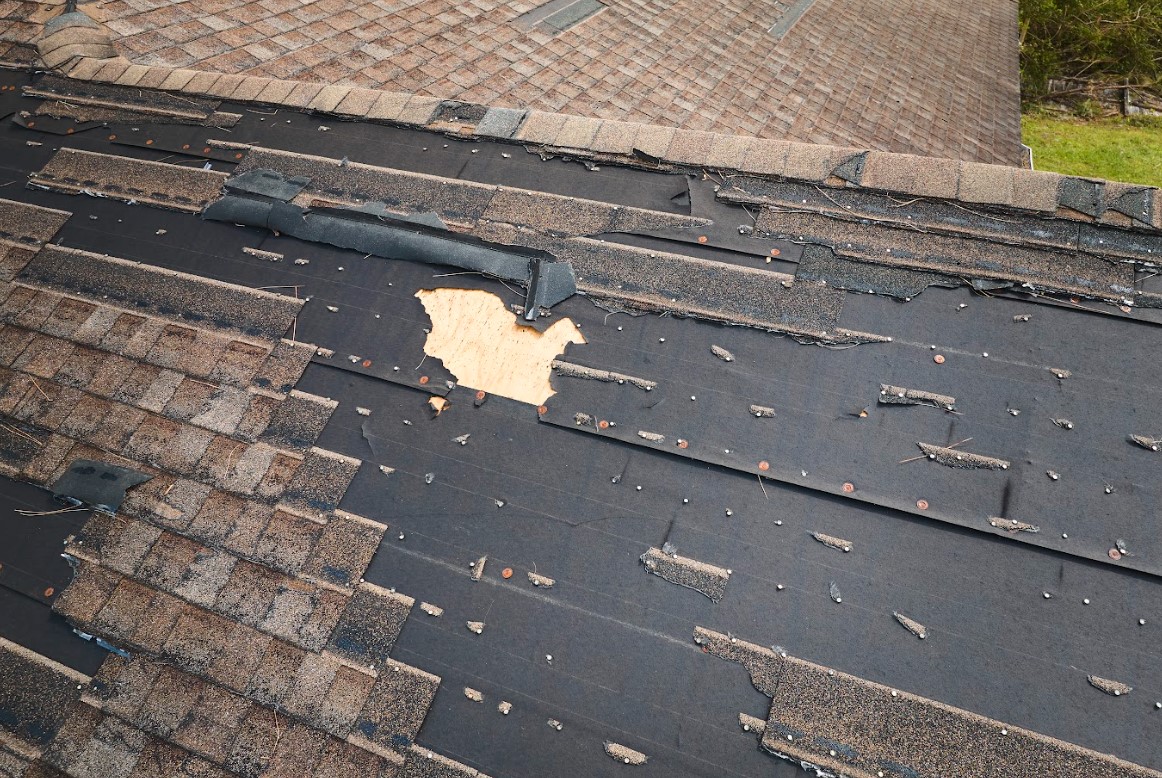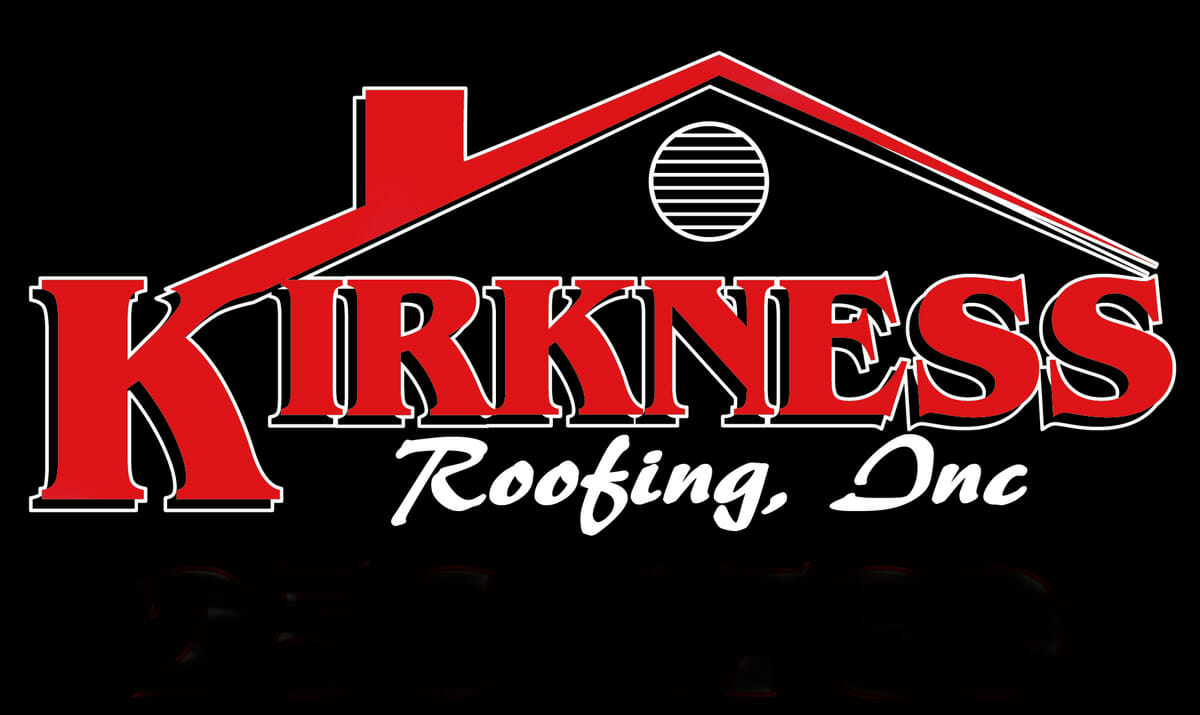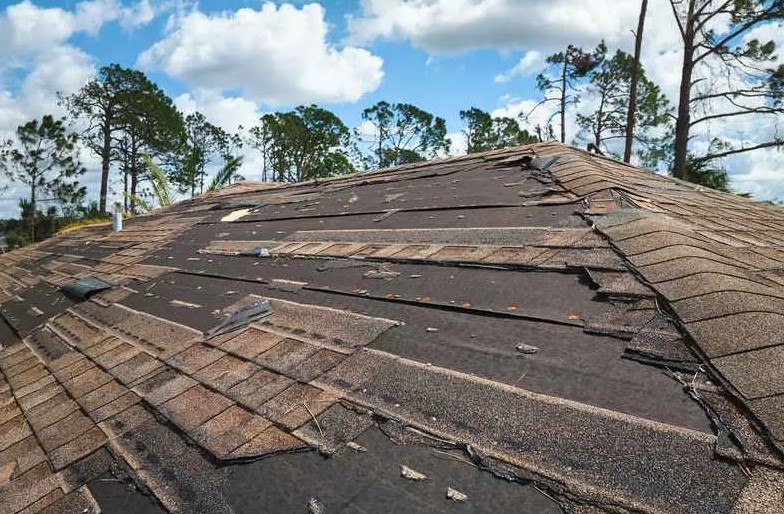Here in Montana, we expect our fair share of wild weather — from hail and heavy snow to high-speed winds that rattle windows and lift shingles. And while hail gets all the headlines, wind damage is one of the most common — and costly — threats to roofing systems across the state.
We’ve been at this a long time — since 1978 — and if there’s one thing we know, it’s that wind roof damage rarely shows up all at once. It creeps in quietly: a loosened shingle here, a bent flashing there. But left unaddressed, these little problems can turn into big, expensive ones.
At Kirkness Roofing, Inc., we want to help you stay ahead of the storm. So, let’s talk about how wind affects your roof, how to spot the early signs of trouble, and what you can do to protect your home — and your wallet.
What You’ll Learn in This Post:
- Why Montana roofs are at higher risk of wind damage
- How to recognize the signs of a wind-damaged roof
- The smartest ways to start protecting your roof from wind
- Whether repair or replacement is the better move
- How we support our customers with real solutions (and real service)
Think you might have roof damage from a recent windstorm? Get in touch with our team at Kirkness Roofing.
Why Montana Roofs Take a Beating from Wind
Not Just Breezy — We’re Talking 60+ MPH Winds
If you live in or around Billings, you know our weather doesn’t mess around. Between spring cold fronts, fall Chinooks, and the occasional microburst, wind gusts here regularly hit 60 mph or more. Add in the wide-open spaces with minimal windbreaks, and your roof can take a hit whether you see it or not.
We’ve seen roofs with shingles lifted right off, metal flashing pulled loose, and flat roofing membranes stretched to the breaking point — sometimes all in one storm.
How Wind Damages a Roof: It’s Not Always Obvious
It Starts Small… Until It Isn’t
Here’s the thing: wind roof damage doesn’t always look dramatic. A few raised shingles or missing granules may not seem like much — until a leak starts showing up in your attic or living room.
Here’s what to look for after a storm:
- Shingles that look lifted, curled, or missing entirely
- Flashing that’s bent or pulled away from the roof edges
- Granules in your gutters or around your downspouts
- Interior water stains (especially on ceilings near outside walls)
- Higher energy bills from insulation problems caused by roof gaps
Even one missing shingle can expose your home to water intrusion. And once moisture gets in, everything from insulation to drywall is fair game.
What You Should Know Before You Repair or Replace a Wind-Damaged Roof
We know that dealing with roof damage can feel overwhelming. But a little planning goes a long way. Here are a few things to keep in mind before calling in a crew (ours or anyone else’s):
Know Your Budget
In Billings and surrounding areas:
- Small repairs usually run between $500–$3,500
- Shingle replacements typically cost $8,000–$22,000
- On average, it’s about $450–$500 per roofing square
We offer financing up to $100,000 with flexible monthly payments and no home equity required — because we understand that paying your deductible or handling a big replacement isn’t always easy.
Understand the Insurance Side
The good news? Most wind roof damage is covered by your homeowners insurance. The catch? It has to be properly documented, and you’ll need to understand your deductible. At Kirkness Roofing, we have licensed and former adjusters on staff to help guide you through the process.
Choose the Right Materials
Some materials just aren’t built for Montana’s wind. That’s why we only install products we trust from manufacturers like GAF, Malarkey, and Owens Corning — all rated for high-wind conditions. If you’re replacing your roof, now’s the time to upgrade to wind-resistant materials that will stand up to the next big storm.

What to Do After a Windstorm: Spot the Damage Before It Spreads
You don’t have to be a contractor to spot signs of roof trouble. Here’s a quick checklist you can follow after a high-wind event:
Check the Obvious First:
- Are there shingles in your yard or driveway?
- Are gutters still attached and flowing properly?
- Do any sections of the roof look different — darker, uneven, or curled?
Then Look (or Listen) Inside:
- Do you hear dripping during rainstorms?
- Any new stains on your ceilings or walls?
- Feeling a draft where there wasn’t one before?
If anything feels off — it probably is. Schedule a free estimate. It’s better to find out early than after a storm causes further damage.
When to Repair and When to Replace
Here’s how we typically help homeowners decide:
Choose a repair if:
- The damage is small and contained
- Your roof is under 10–12 years old
- The decking and underlayment are still solid
Consider a replacement if:
- Damage affects multiple areas or roof sections
- Your shingles are curling, cracking, or shedding granules
- Your roof is nearing the end of its life (15–18 years is common here)
Our team doesn’t believe in pushing unnecessary replacements. We give honest assessments — and explain your options in clear terms, not contractor jargon.
The Best Roofing Materials for Montana Windstorms
What We Recommend (Because We’ve Seen It Work)
| Material | Wind Resistance | What It’s Best For |
| Architectural Shingles | Up to 130 mph | Affordable + good durability |
| Metal Roofing | Up to 180 mph | Long lifespan + great in rural/windy areas |
| TPO & PVC Membranes | Up to 130 mph | Flat commercial or low-slope residential roofs |
| Modified Bitumen | 90–120 mph | Flat roofs on older structures |
And just as important as the material? The installation. Poor nailing, weak flashing, and loose seals are all common reasons we see roofs fail in windstorms — even with good materials. We make sure your roof is wind-zoned, correctly nailed, sealed at edges, and inspected thoroughly.
Plus, our installations come with up to 20 years workmanship warranty and lifetime materials options, depending on your system.
Wind Damage Roofing FAQs for Billings Homeowners
If you’ve recently experienced a windstorm — or even just suspect a problem — you’re not alone. Many homeowners across Montana, especially in the Billings area, have questions about how wind affects their roofing systems, what insurance covers, and what steps to take next. Here are the answers to the most common questions we get at Kirkness Roofing when it comes to wind damage and your roof.
How do I know if my roof has wind damage?
You can tell if your roof has wind damage by checking for missing or lifted shingles, warped flashing, granule loss near your gutters, or signs of water stains on your ceilings or in the attic. However, not all damage is easy to see from the ground. After any major windstorm, it’s smart to schedule a professional inspection to be sure.
Does insurance cover wind damage to my roof?
Yes, wind damage to your roof is typically covered under most standard homeowners insurance policies. If your roof was damaged by a recent wind event, your insurance may help cover the cost of repairs or replacement — minus your deductible. At Kirkness Roofing, we help homeowners navigate the claims process and communicate directly with adjusters to make things easier.
What type of roof is best for handling wind in Montana?
The best roofing materials for handling wind in Montana are metal roofing and high-wind-rated architectural shingles. These options are specifically designed to withstand gusts up to 130–180 mph and hold up well against Montana’s frequent storms. Our team installs both and can help you choose based on your home, location, and budget.
Can one missing shingle really cause serious roof problems?
Yes, even one missing shingle can lead to serious roof problems over time. That small gap can let in moisture, which may damage your underlayment, insulation, or even interior walls if not addressed. It’s always best to handle small issues before they grow into bigger, more expensive repairs.
How often should I inspect my roof for wind damage?
You should inspect your roof at least once a year, ideally in the fall before winter weather sets in. Additionally, you should schedule an inspection after any major windstorm, especially if gusts were over 50–60 mph. Early detection helps you avoid surprise leaks and extend the life of your roof.
Final Thoughts: A Strong Roof Is the Best Protection from Montana’s Wind
Here’s the bottom line: Wind roof damage is something every Montana homeowner will face eventually. But when you stay ahead of it — with the right materials, the right team, and the right plan — you can minimize the stress and cost.
At Kirkness Roofing, we’ve built our business on trust, transparency, and quality craftsmanship. We don’t chase storms — we stick around and stand by our work. With over 40 years in the industry, certified installers, and an A+ BBB rating, we’re here to help you make smart decisions and protect your home from the unpredictable windstorms we all live with.
Think your roof might have wind damage? Let’s take a look. Schedule your free estimate today.

